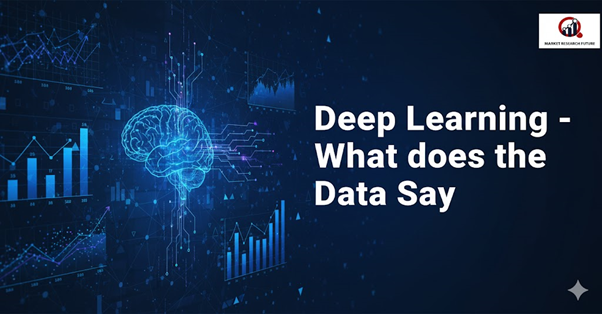Deep Learning: What does the Data Say?

Overview of the Deep Learning Market
The rapidly rising scope of data-driven intelligence is augmenting the global deep learning market, helping the ecosystem reach USD 27.84 billion in 2024. The realm deep learning is expected to reach USD 322.17 billion by 2035, owing to a propelling CAGR of 24.93% through the forecast period.
Deep learning is a subset of machine learning that has enabled dramatic progress in artificial intelligence (AI), becoming one of the most powerful tools for companies deploying AI-driven solutions.
But what is deep learning, exactly? And how does it differ from other types of machine learning? Deep learning teaches computers to identify patterns in data by showing them vast numbers of examples, often millions or billions. These systems learn autonomously, without requiring human input at every step.
Deep learning is one of the most exciting fields in AI today, allowing computers to recognize patterns in imagery and speech with unprecedented accuracy. It has moved beyond research labs to practical business applications across industries.
Technically, deep learning is a branch of machine learning. Machine learning algorithms train themselves as data flows in and out of the system, enabling them to “learn” from examples without being explicitly programmed.
Deep learning focuses on artificial neural networks, computer models loosely inspired by how the human brain works. These networks consist of multiple layers, with each layer representing an abstraction of information. Deep learning involves constructing systems with many hidden layers that process data hierarchically to solve complex problems.
In some ways, deep learning is similar to the machine learning algorithms used by companies like Netflix for movie recommendations or Amazon for personalized shopping suggestions.
However, deep learning operates at a deeper level, identifying complex relationships in images, speech, and text. It can also be used for predictive modeling, estimating the likelihood of future events based on past data.
Deep learning helps companies harness data more effectively to stay ahead of competitors. Many organizations, from insurance providers assessing risk to healthcare institutions optimizing diagnostics, are exploring how deep learning can transform their operations and improve efficiency.
Deep learning systems are applied in areas such as image and facial recognition, robotics, and speech processing. For instance, these systems can identify faces with greater accuracy than traditional methods.
In the future, advancements in deep learning could even reduce dependence on sign language or assistive devices for people with hearing impairments. Deep learning’s strength lies in its layered architecture, enabling superior pattern detection and decision-making compared to earlier analytical systems.
Regional Analysis
In North America, deep learning adoption surged in 2024 with major investments in healthcare AI, autonomous vehicles, and cybersecurity applications. Europe focused on ethical AI frameworks and research collaborations to boost transparency and trust in neural networks.
Asia-Pacific witnessed rapid deployment of deep learning across manufacturing and financial sectors, driven by strong government AI initiatives in countries like China, Japan, and South Korea.
South America saw growing use of AI-based analytics in agriculture and logistics, while the Middle East & Africa emphasized smart city projects and deep learning integration in energy management. These trends collectively reflect a global push toward scalable, intelligent automation powered by deep learning technologies.

Leave a Comment